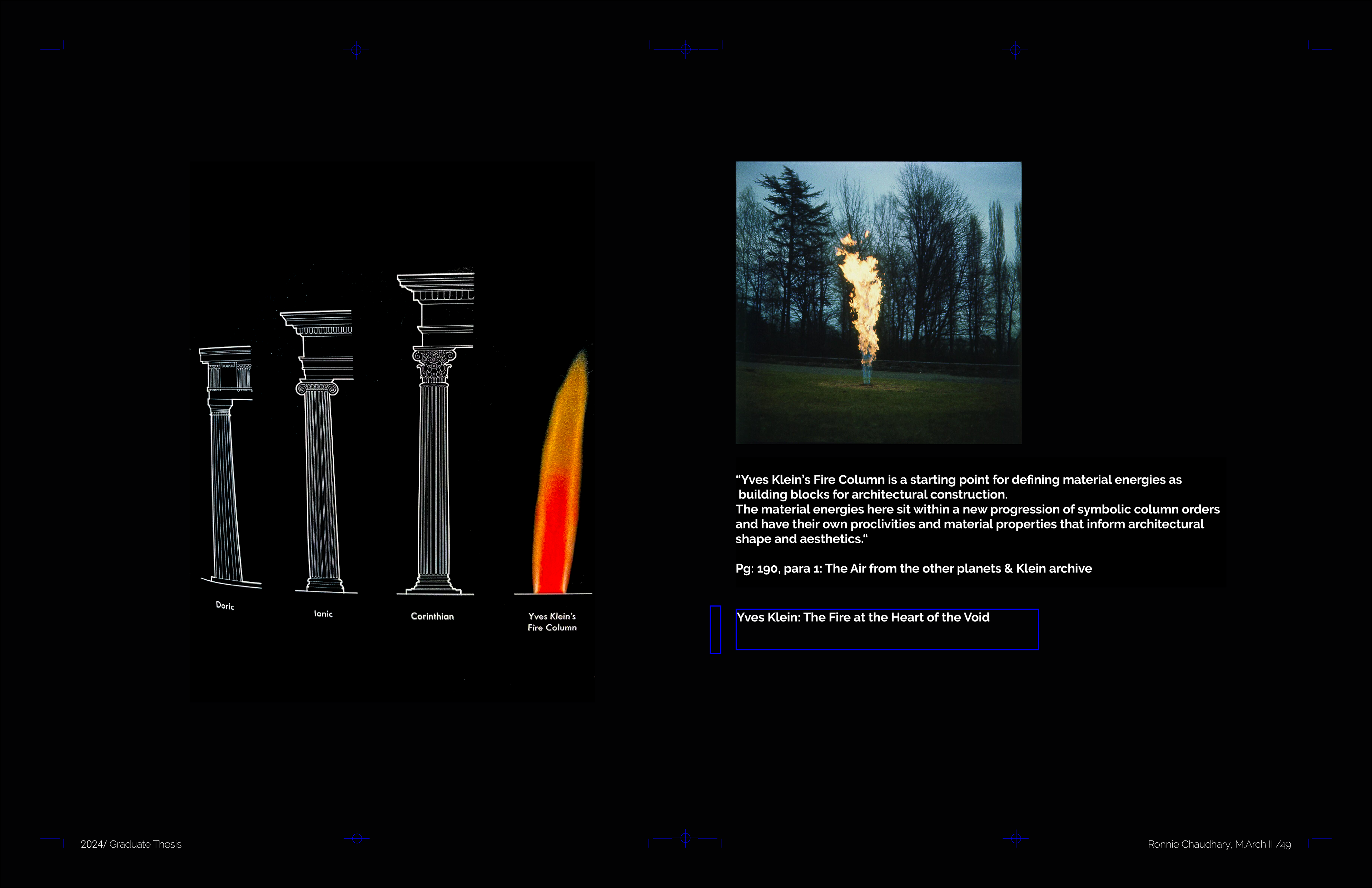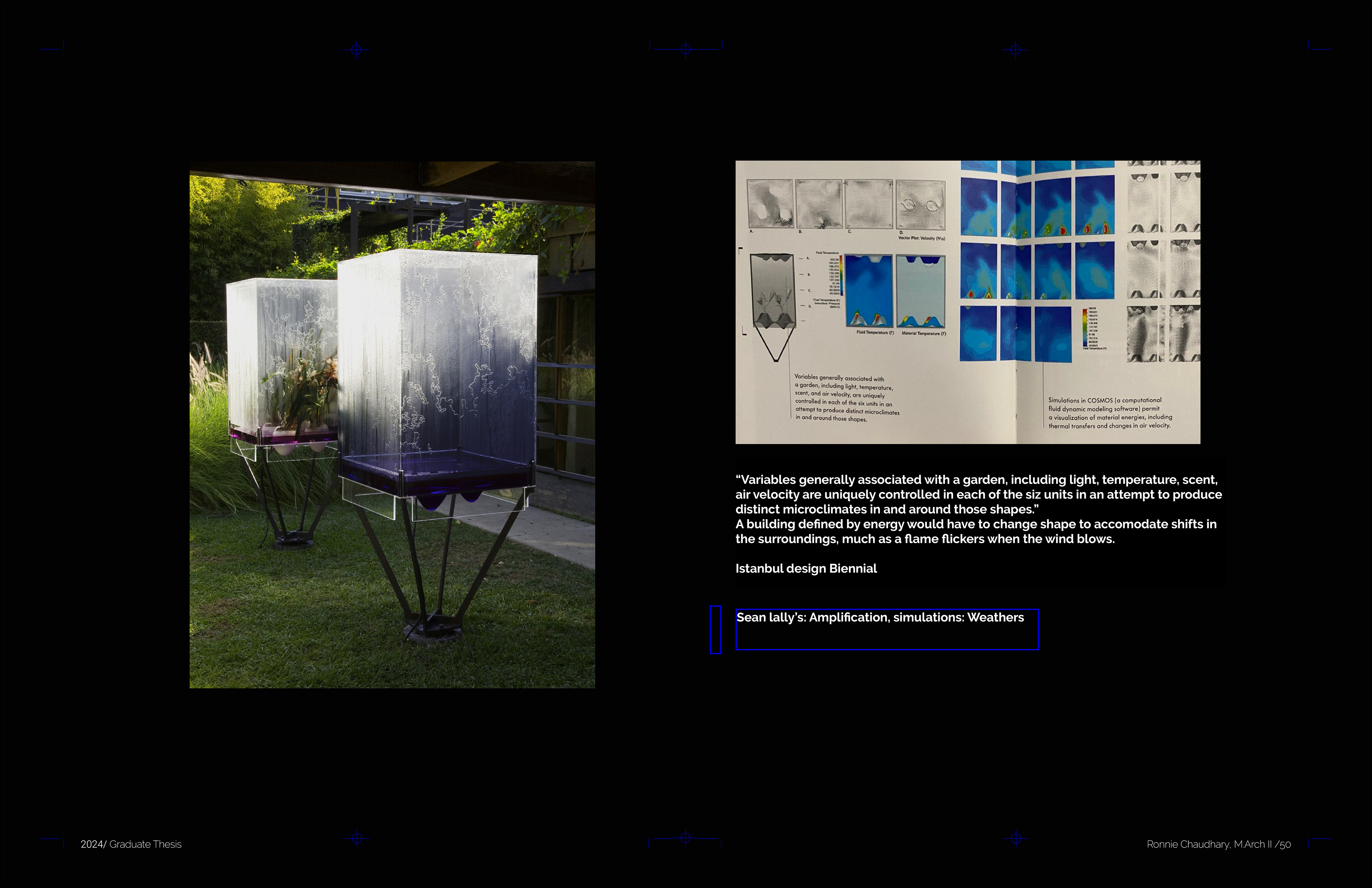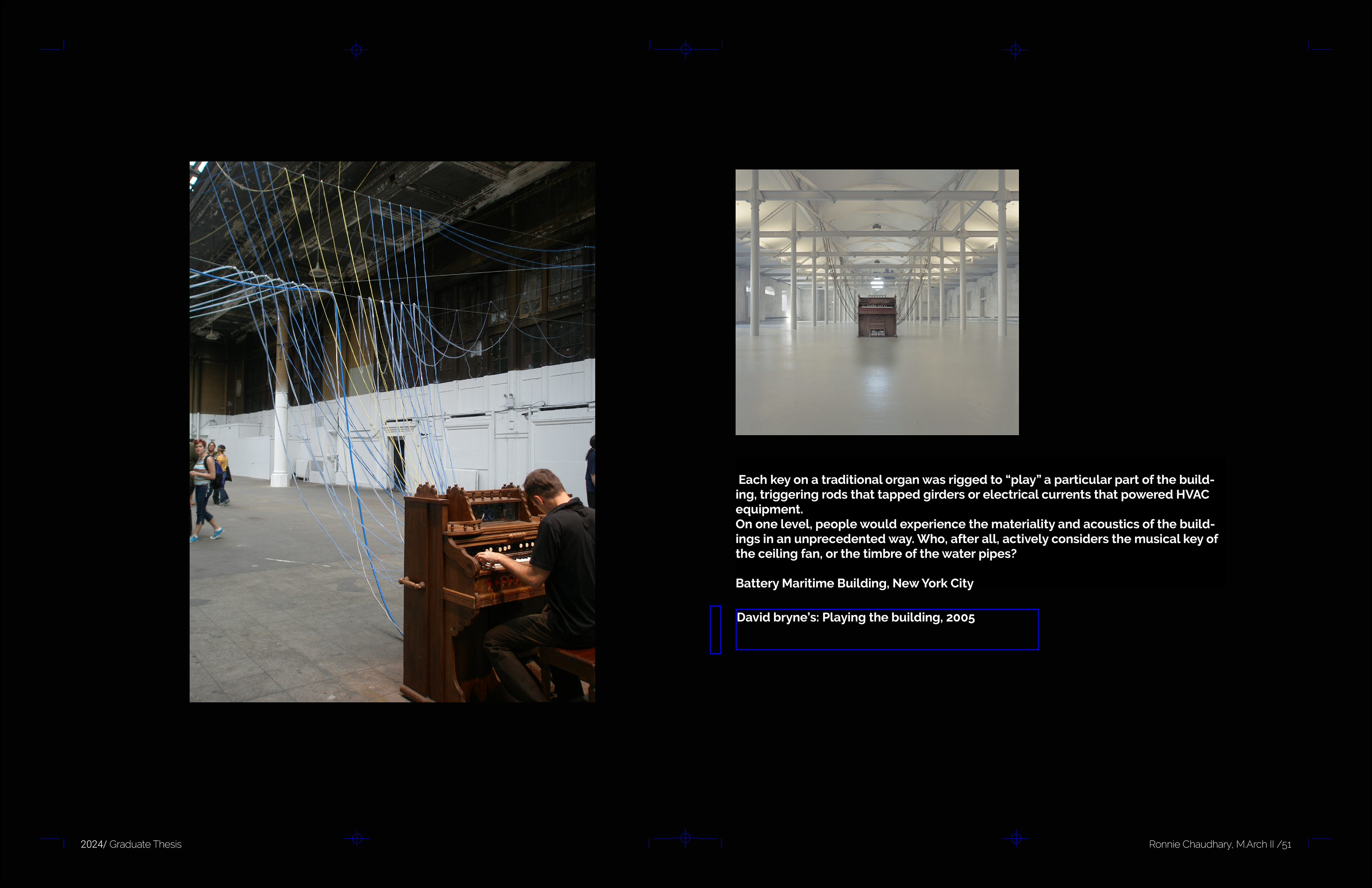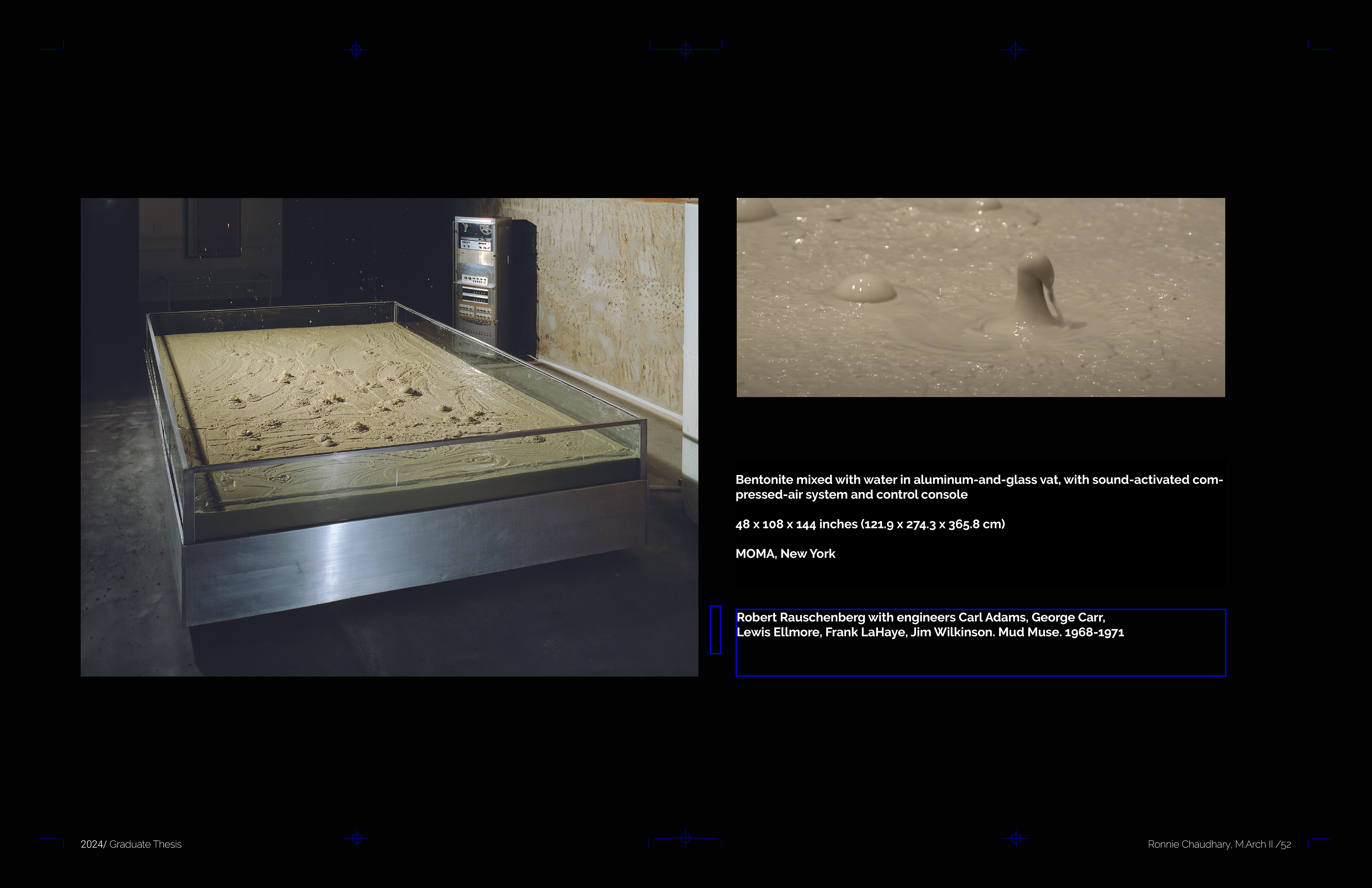Developing a Live Spatial Modelling tool in real-time
Ar Raunak Chaudhary
Thesis Adviser: Hernan Diaz Alonso
2024
Exhibited: SCI-Arc Gallery, space-10
Art District, LA
(5th sept-15th sept'2024)
The thesis explores the ability of technology to interpret the environmental condition of a physical space beyond the ability of humans to directly express this condition through the information logic of existing design interfaces. Many technologies like non-invasive techniques of electrocardiography, x-rays, auscultation of heart sound using a stethoscope and temperature using thermometers, gene expression imaging, magnetic resonance elastography, optical coherence tomography, etc., have been used to access physiological information, but can we interact with this multisensory data in our surroundings to design and experience space at the same time?,The spatial pair’s post-interface utilises multi-sensory data as material energy to design a space's spatial condition along its physical form using sound as a spatial trigger, spatial instrument and spatial configurations. Imagine a hyper-localised tool that allows you to model space not just by its physical properties but also by its sensory experiences. So, How do we, as designers, navigate this multiplicity of responses? How do we balance this undefined, improvisational and open-ended nature of these spatial conditions?
“Technology functions essentially as the mediator between an individual and its
surroundings: It is the very process through which an individual negotiates its own limits, and thus its own form, in the context of a mutual relation with the world around it. As such, technology is both a network of relations and the very process of defining individuals.
surroundings: It is the very process through which an individual negotiates its own limits, and thus its own form, in the context of a mutual relation with the world around it. As such, technology is both a network of relations and the very process of defining individuals.
Designing a system architecture where virtual and physical space starts to act as one involves creating an information feedback loop where any action in the virtual space is captured as an electrical impulse and sent to a physical space, triggering real-life spatial responses. This spatial logic lets us interact with the multi-sensory data as a material, an imprint we design with and use in real-time to design a space’s spatial condition.
Grey Lynn points out in animate form,“Traditionally, in architecture, the abstract space of design is conceived as an ideal neutral space of cartesian coordinates. In other design fields, However, design space is conceived as an environment of force and motion rather than as a neutral vacuum. In naval design, for example, the abstract space of design is imbued with the properties of flow, turbulence, viscosity, and drag so that the form of a hull can be conceived in motion through water. Although the form of a boat hull is designed to anticipate motion, there is no expectation that its shape will change. The form can be shaped by the collaboration between an envelope and the active context in which it is situated“[1]. It is difficult to overstate just how much both the architect and the people who use a building’s spaces rely on walls and surfaces to define what we refer to as architecture. Sketching with lines, making models with blocks, and then realizing those representations with solid masses of steel, stone, wood, and concrete is our fundamental method of operation. This is where spatial pairs depart from material to spatial logic while expressing a clear distinction between matter and form, proposing autonomy, and giving agency back to the designer while challenging the conventional cartesian coordinate system, offering a new method of synthesis that considers the rate and mode of translation and transduction as integral components of the design process.
“One of architecture’s primary acts is to define the spatial boundaries that organise and hold specified activities within them. The behavioural properties of the materials used to make that boundary not only influence the physical characteristics of that space (maximum height, span, aperture sizes) but also determine how the human body perceives and senses those boundary changes (opacity, transparency, acoustics), which then informs the behaviours and movements of the individuals using the space. Architects have continually tested and subverted this definition of boundaries as new materials, construction methods, and social trends have emerged over the centuries. It follows that if energy could be controlled and deployed as physical boundaries that define and organise spaces that the human body can detect and recognise, wouldn’t that be architecture?“[1] sean lally points out in The Air from Other Planets: A Brief History of Architecture to Come (Lars Müller).
The spatial pair lays down its foundation as a bridge between tools of formation and tools of information. Underscoring the fact that one crucial function of media is to form experience as operative channels. These interactions with a network of multi-sensory data is developed with an individual-individual relationship (use of primary tools of communication: voice, gestures, touch, smell), individual-tool relationship (use of existing hardware and materials external to the body for communication) and individual-environment relationship (use of collective and multi-agent feedback for communication) creating an interdependent morphology into designing a live spatial modelling tool that will soon in the future let us manipulate light, heat, smell and sound by interacting with our physical spaces using virtual interfaces.




All Images, photographs, drawings, videos, gifs and content of this website remain the sole property of Ar. Raunak and may not be used or reproduced without consent.
All rights reserved. Copyright ©